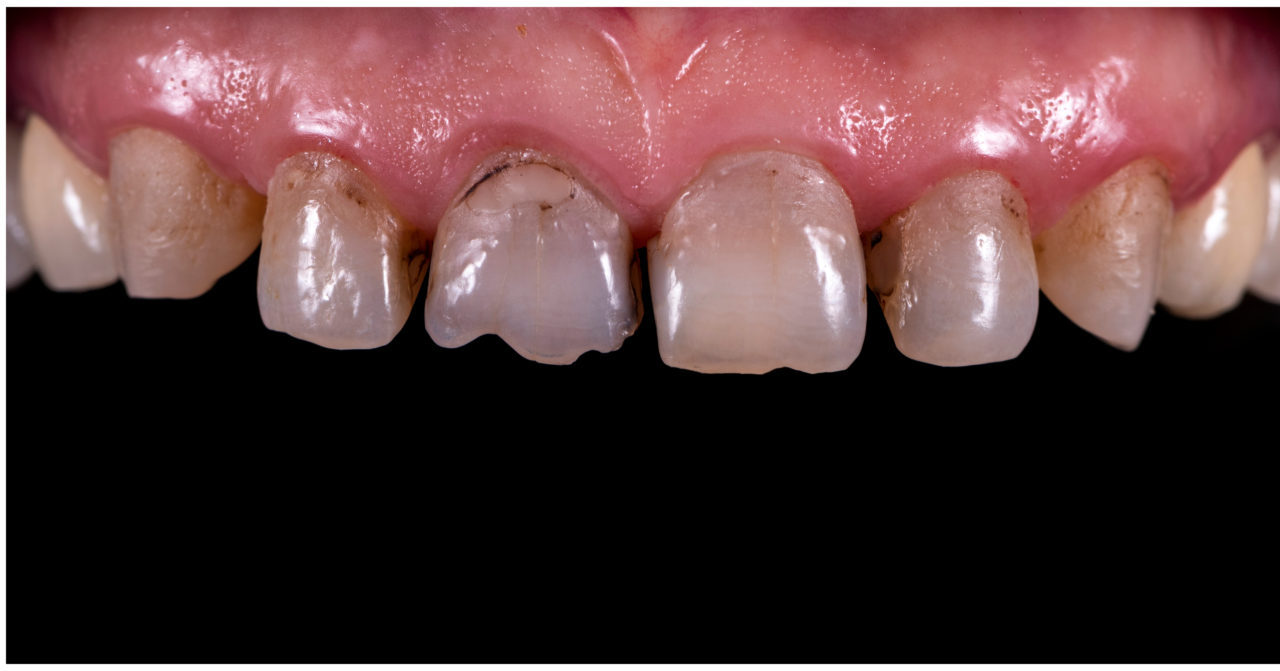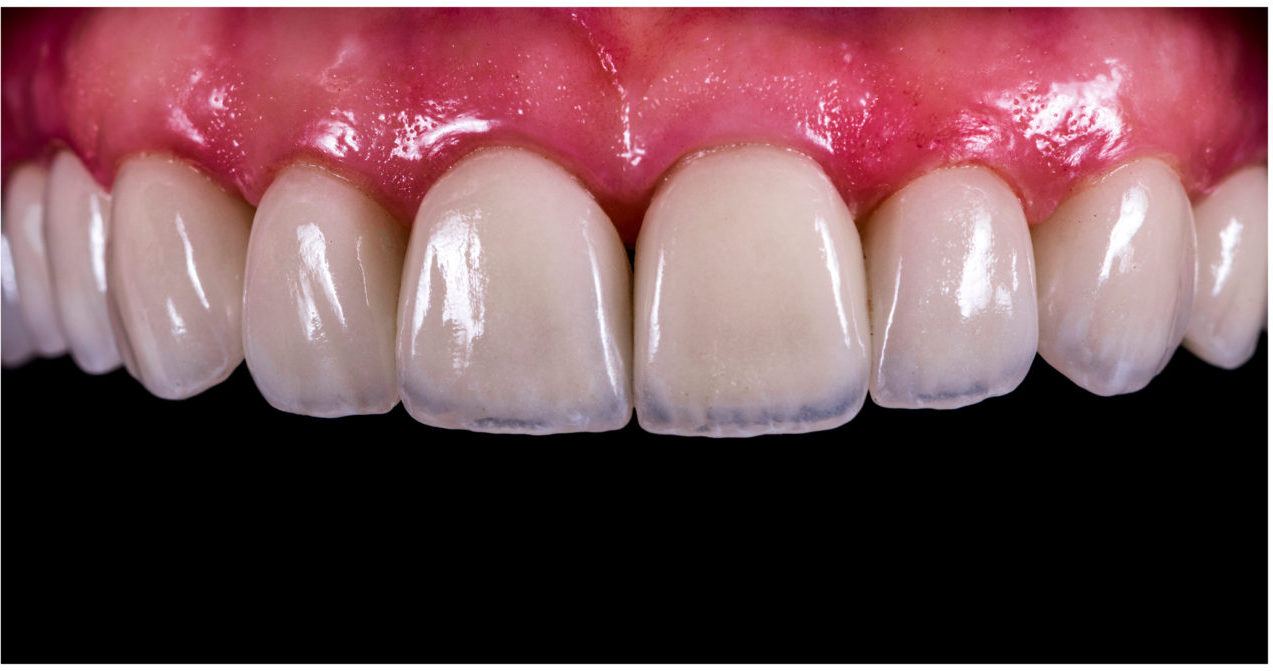Cosmetic dentistry aims at improving dental and facial aesthetics and creating harmony with an end result of an attractive smile. This not only enhances once appearance but also adds to confidence and self-image. There are various types of cosmetic dental treatment that can be offered depending on the current dental status and the need and desires of an individual. Usually, the most common concern is discolored teeth due to either staining or genetic inheritance, which brings one to a dental clinic seeking cosmetic dental treatment such as tooth whitening or veneer procedures. However, the concerns can vary from a gummy smile to a maligned tooth, missing teeth, broken teeth, etc.
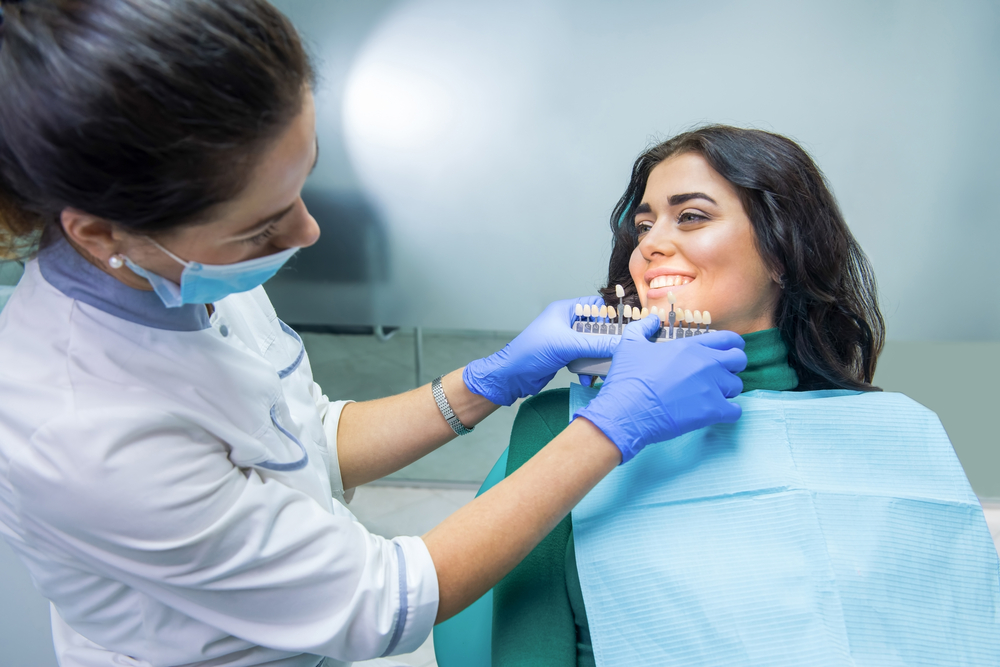
Teeth Whitening
Teeth whitening is a simple, conservative way to improve the appearance of a smile and reduce tooth discoloration. Whiter teeth can make one look younger and, as most people agree, more attractive.
Teeth can be stained due to factors like smoking, increased consumption of tea/coffee or other colored food products and even aging can lead to the discolouration of teeth. Teeth whitening/bleaching can be done for the removal of stains and to restore the natural shade of the teeth , either as an in office treatment or as an At home treatment.

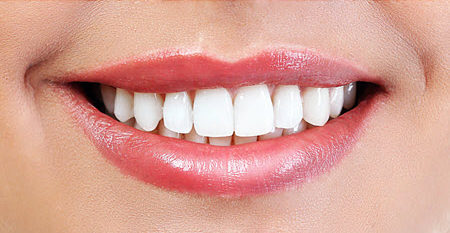
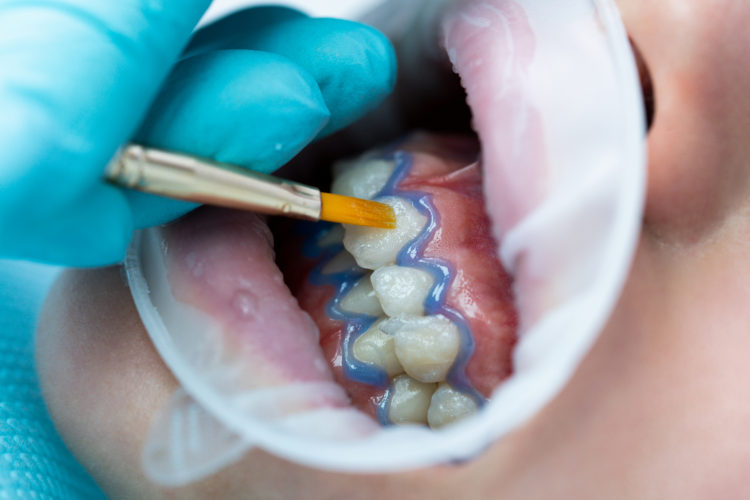
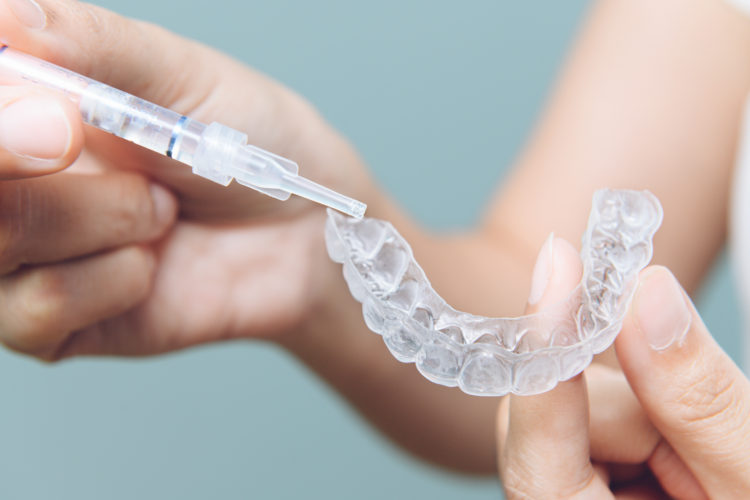
Basically, there are two options available for the patients for teeth whitening:
- Professional teeth whitening with the ‘In-Office’ method.
- The ‘At-Home’ method of tooth whitening: The bleaching agent penetrates the outer layer of the tooth, the enamel and removes the stains and improves the shade of the tooth. The ‘At-Home’ Professional teeth whitening products can be available in the form of whitening gels. In the chair-side method, we use professional teeth whitening kits and devices to achieve the optimum shade of the tooth.
In either case, the active ingredient is carbamide peroxide or hydrogen peroxide. The concentration of the bleaching agents is greater in the products used in the chair-side method as compared to the over-the-counter whitening products and other ‘At-Home’ variants. Moreover, laser therapy or application of heat is done in the chair-side method. This technique assists in achieving quick and effective results. When you're doing an in-office treatment, there's a much better chance that your teeth will whiten as a result.
Alternatively, the dentist may also prescribe you a bleaching gel along with a custom tray as the ‘At-Home’ tooth bleaching option in case that suits you.
After the visit to our office and the initial diagnosis, we can recommend and advise you on the correct treatment according to your individual circumstances and financial options.
What is Laser Teeth Whitening?
Laser teeth whitening treatment is a cosmetic laser dentistry procedure that adds the use of a laser to activate the teeth whitening agent. It is only offered in-office. It involves placing a concentrated whitening gel on your teeth and then using a laser to heat it up, which whitens your teeth quickly.
One of the most common laser teeth whitening procedures, Zoom teeth whitening, is a process by which a light-activated 25 percent hydrogen peroxide gel is applied to the teeth before a blue plasma light activates the solution.
The biggest side effect of laser teeth whitening is sensitivity—both in the sense that your teeth will be more sensitive to temperatures and may be more sensitive to staining. In fact, you will be advised not to eat any colorful foods or beverages for the next week since they could stain your teeth. Right after your teeth are professionally whitened, you can't eat or drink anything with color. After five days, the new color of your teeth is locked in." it is then safe to start having colored food.
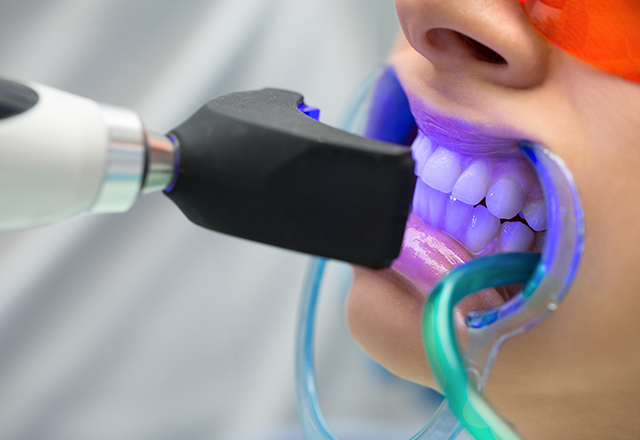
The biggest benefit of teeth whitening is that a person who hides his teeth during social interactions, now starts smiling often showing off the new set of teeth; boosting the self-esteem of the person. The overall quality of life is improved. Also, as the discoloration due to aging process can be reversed by this technique, it gives you a young and dynamic look, giving you more reasons to be out enjoying life.
It's important to note that one treatment doesn't mean your teeth are eternally white. The bleaching doesn't last forever. "We can whiten your teeth in the office, but eventually, it fades back. In order to maintain it, we make you customized trays that you take home with you. Once your teeth are white, you can do it once a month for a half-hour—this will maintain the whiteness."
Veneers
Porcelain veneers are delicate thin porcelain covers/caps, used to give you back the natural clean look of your teeth. At the same time porcelain veneers provide strength and resilience which can be compared to that of natural tooth enamel. Today, Veneers is increasingly becoming an aesthetic option to make small corrections in tooth alignment, or to change the shape, size or color of the tooth.
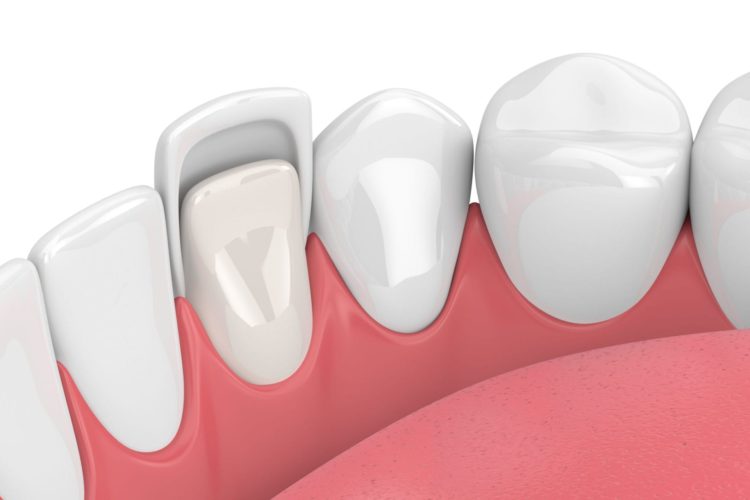
A veneer consultation can be arranged to assess if veneers are the correct option for you depending on your requirement and what you want to achieve. The time spent in identifying what kind of cosmetic improvements you seek is very important, and we take it very seriously when we listen to you as success of the treatment depends on it.
Our diagnostic mockup allows you to “try on” veneers so you can see if the end result matches up with your expectations.
Porcelain veneers consist of several extremely thin layers of ceramic. They will replace some of the original tooth enamel, and add a layer with the help of an adhesive. To place a veneer onto a tooth, reduction is done from the existing tooth enamel has. This is important as it makes space for the porcelain veneer to fit well and comfortable within the mouth and most proficiently restore the natural tooth function while simultaneously achieving a more appealing look of the tooth/teeth. The bond between the porcelain veneer and original tooth is important. A resin modified cement is used as the adhesive material directly between the original tooth and the veneer. This resin then undergoes a hardening process using a dental curing light.
When preparing, in between prep and fit appointments of the veneer, the dentist can make temporaries, usually out of composite. These are not normally indicated but can be used if the patient is complaining of sensitivity or aesthetics. Its an option that can be made available to you.
Porcelain veneers can be highly effective and easy options in great many situations,
- A tooth has developed an unsightly color, shape, or contour.
- It is very often a very good choice to deal with fractured teeth or spaces between teeth. Veneers can also be used to correct when there are non-major bite-related problems.
- Sometimes topical stains do not react well to teeth whitening or bleaching. In those situations, a porcelain veneer could be a great option. A further benefit is of course, that by using veneers the teeth which cannot be made white using standard teeth whitening products/treatments can be made bright and can get their sparkle back.
Unlike natural teeth, the custom-made veneers are very resistant towards coffee as well as tea stains, and even cigarette smoke because the veneers are made of high-tech material.
Because veneers are bespoke made for each person, it is very difficult, even impossible to see the difference between a veneer and a “normal” tooth.
Smile Make Over
A smile makeover is the process of improving the appearance of the smile through one or more cosmetic dentistry procedures, such as:
Some of the components taken into consideration include your facial appearance, skin tone, hair color, teeth (color, width, length, shape, and tooth display), gum tissue and lips.
Smile makeovers are performed for many reasons and customized according to your unique considerations.
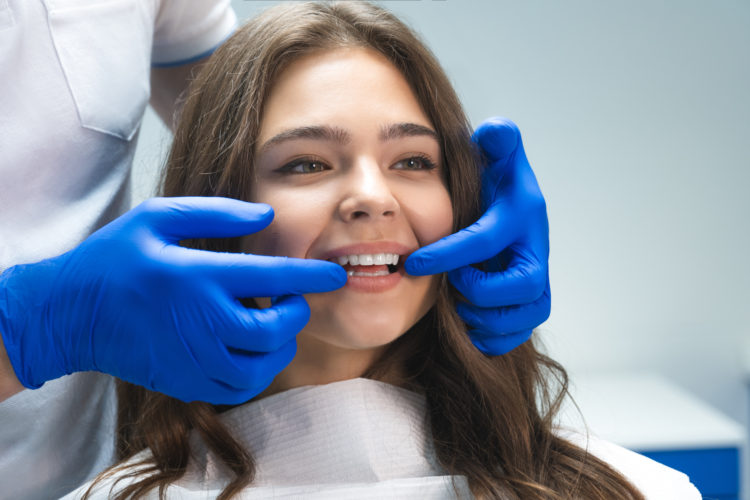
What is it that you like or dislike about your smile or your teeth? Some aspects of your smile that your cosmetic dentist will review with you and that could be improved include the following:
Silver or amalgam dental fillings can be replaced with natural, tooth-colored composite restorations, while teeth whitening can improve the color of stained or dulled teeth. Tooth color and shading are important considerations during the evaluation of and preparation for various procedures, including porcelain veneers, crowns, bridges, composite bonding, and dental implants.
When considering the color of your teeth, keep in mind that dark or discolored teeth may suggest an aged mouth. A well-shaped smile comprised of bright, white teeth, leads to a youthful appearance. The shade your dentist selects for teeth whitening and veneers is carefully evaluated with special consideration given to the tone and color of your face and hair. Cosmetic dentists are skilled at finding the right balance between providing you with a brighter, whiter smile and maintaining a natural tooth color.
Teeth that are crooked, overlapping or have gaps between them can be straightened and aligned when necessary through orthodontics and also improved with veneers.
One or more missing teeth can negatively affect the appearance of your smile – as well as affect your bite and increase your risk for tooth decay – making replacement an integral part of oral health and facial esthetics. Missing teeth can be replaced by dental implants, bridges, or partial dentures.
Uneven, chipped and cracked teeth can be cosmetically bonded for an improved appearance, and a gummy smile can be re-contoured to help improve the overall look of the smile.
An unshapely or aging face can be improved or rejuvenated with certain procedures in the smile makeover category, including orthodontics and/or oral maxillofacial surgery. We have more details for you with our facial aesthetic options offered on the Face Aesthetic Clinic.
At Dental square your scope for smile design is beyond dental aesthetics, offering a wide range of treatment options from Dermal Fillers, Botox, PRP, Laser therapy to Facial re contouring.
At Dental square, we work closely with you to develop a treatment plan designed to achieve exactly what you want from your makeover. This treatment plan may consist of many cosmetic and functionally restorative procedures, potentially including teeth whitening, composite bonding, veneers, dental crowns, orthodontics (braces), oral maxillofacial surgery and gummy smile correction.
Aesthetic Components of a Smile Makeover
In addition to the color, alignment and balance of your teeth in the aesthetic zone of your smile (the section of upper and lower teeth that show when you smile), there are several attributes of your teeth and smile that your cosmetic dentist will evaluate with you when planning your makeover. These include:
Long teeth lend a youthful appearance. Aging produces wear and tear that often results in shorter teeth, and a gummy smile also can make teeth appear shorter. A treatment for shorter teeth may include reshaping and lengthening the two front central teeth with composite bonding or porcelain veneers. If you have a gummy smile, your cosmetic dentist may provide treatment to modify the gum line and lengthen the appearance of the teeth using laser dentistry procedures. You may also be referred to a periodontist for crown lengthening if necessary.
Teeth lengthening may also impact your overall facial appearance. For example, shapely, long, square teeth on a round-faced individual can provide a slimming effect.
The smile line is an imaginary line that follows the edges of your upper teeth from side to side, which ideally should be the same as the curve of your lower lip when you smile. This standard point of reference may be used to help determine how long your new teeth should be.
Your Dental Square cosmetic dentist will examine your teeth to determine if they are in correct proportion with each other. Most people recognize a pleasing smile as one in which the two central front teeth are dominant and have a width-to-length ratio of 4-to-5. This proportion guides the length and width of other teeth in the aesthetic zone so that the smile line appears balanced.
An artistic dentist can characterize your crowns or veneers to create a more feminine or a more masculine appearance, in addition to matching the look and feel of natural teeth or those you’ve seen in photographs.
Maintaining Your Results
Cosmetic dentistry procedures require regular oral hygiene care and may require maintenance over time. For example, teeth whitening must be repeated on occasion in order to maintain brightness. Porcelain veneers may chip or break off and need replacement. Definitive composite bonded restorations may stain and require enhancement or replacement. Dental crowns typically require replacement after 10 to 15 years. Gummy smile improvements may also require enhancement over time.
Your ceramist, lab technician and the materials chosen by your dentist also impact the longevity of your smile makeover. To achieve the best results, take special care in inquiring about your material options.
Your oral health must be evaluated before a cosmetic dentist develops a plan for your smile makeover. Your dentist will conduct a comprehensive evaluation of your teeth, gums, underlying support structure and bite (occlusion) to determine candidacy for a smile makeover. If your evaluation reveals that you have an oral health problem – such as a misaligned bite (malocclusion) or gum disease – you will need to have that taken care of first.
Preview
At Dental Square we incorporate a variety of dental technologies to show you the changes that you can expect to see in your smile. For example, during your oral health evaluation for veneers and crowns, your cosmetic dentist may create a wax model mockup of temporary teeth to accurately communicate the requirements of your procedure to the dental lab technician. Temporaries and wax mockups also offer you a preview of the expected outcome to ensure that you are comfortable with the proposed treatment plan.
Other methods available for you to preview your smile makeover include the following:
Before and after photos of other patients who have had smile makeovers offer examples of the results you may expect to see. The photos may also give you an idea of the quality of work performed by your dentist.
Your dentist will take an impression of your teeth and fill it with plaster to form an exact model of your teeth. The plaster can then be reshaped by trimming away excess areas or enlarging areas that require more volume. Dentists use study models to show you every aspect of the changes you can expect to see with your makeover. Dental lab technicians also use study models as guides for fabricating materials like crowns or veneers.
Your dentist may work with a laboratory that incorporates digital technologies. In such instances your dentist may be able to use digital scans of your teeth, rather than traditional impressions, for use in making the models of your teeth and smile.
Dental composite bonding may serve as a mockup of your smile makeover. The dentist can temporarily bond composite resin material to your teeth so you can fully visualize the impact of the procedure before treatment begins. In the case of veneers, dental composite bonding allows you to identify how comfortable you are with their look, feel and fit. Adjustments may be made until you are comfortable with the function and appearance of your new smile. Temporary mockups have no lasting impact on your teeth once they are removed.

